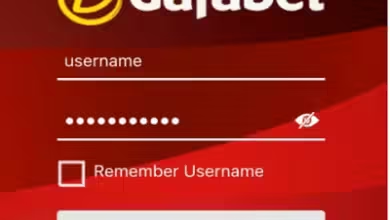Why Is Hinaaminen Important?

Step into the vibrant world of “Hinaaminen” – a practice deeply rooted in history and culture, yet ever-evolving in its significance today. Join us on a journey to explore the importance of embracing and honoring one’s heritage through this timeless tradition that celebrates cultural identity like no other.
What is Hinaaminen?
Hinaaminen, a term originating from Finnish culture, encompasses the act of acknowledging and honoring one’s roots. It goes beyond mere recognition; it involves actively embracing and celebrating one’s cultural heritage in all its richness and diversity.
This practice serves as a powerful reminder of our ancestors’ traditions and values, passed down through generations. It is a way to connect with our past while grounding ourselves in the present.
Hinaaminen involves rituals, customs, language preservation, art forms, storytelling – all serving as threads that weave together the fabric of cultural identity. By engaging in Hinaaminen, individuals can cultivate a sense of belonging and pride in their unique background.
It is not just about looking back; it is about carrying forward the legacy entrusted to us by our forebears. Through Hinaaminen, we honor their struggles and triumphs while forging our path ahead with reverence for where we come from.
The Historical and Cultural Significance of Hinaaminen
Hinaaminen holds a deep historical and cultural significance that transcends generations. Originating from the rich traditions of various cultures, hinaaminen is a practice deeply rooted in honoring one’s heritage and ancestors. It serves as a way to preserve and celebrate the unique customs, beliefs, and values passed down through time.
Throughout history, hinaaminen has been a vital aspect of societal rituals and ceremonies, symbolizing unity within communities and families. The act of embracing one’s roots through hinaaminen not only connects individuals to their past but also shapes their present identity.
By understanding the historical context behind hinaaminen, we gain insight into the diverse tapestry of cultures that make up our world today. These traditions are more than just rituals; they are living expressions of heritage that foster a sense of belonging and pride in one’s ancestry.
How Hinaaminen is Practiced Today
In today’s modern world, hinaaminen is practiced in various ways that reflect the evolving cultural landscape. From traditional ceremonies to everyday interactions, the essence of honoring one’s heritage remains deeply ingrained in many cultures.
One common practice of hinaaminen today is through storytelling. Families and communities pass down tales and traditions, keeping their cultural identity alive for future generations to cherish and learn from.
Another way hinaaminen is embraced today is through festivals and celebrations that showcase unique customs, music, dance, and cuisine. These events not only bring people together but also serve as a reminder of the rich history and values that define a culture.
Additionally, hinaaminen can be seen in language preservation efforts where communities strive to keep their native tongue alive by teaching it to younger members. This linguistic connection serves as a crucial link to ancestral roots and traditions.
Practicing hinaaminen today involves a blend of old rituals with new interpretations that ensure cultural heritage continues to thrive in an ever-changing world.
Benefits of Embracing and Honoring One’s Heritage through Hinaaminen
Embracing and honoring one’s heritage through Hinaaminen holds numerous benefits that go beyond just preserving cultural traditions. By actively participating in practices that celebrate one’s roots, individuals can deepen their connection to their ancestry and gain a sense of belonging and identity.
Through Hinaaminen, people can pass down valuable knowledge, stories, and customs to future generations, ensuring that these rich aspects of culture are not lost over time. This process fosters a strong sense of pride and appreciation for where one comes from, fostering a deeper understanding of self.
Moreover, engaging in Hinaaminen allows individuals to build bridges with others who share similar backgrounds. It creates a sense of unity within communities and opens up opportunities for cross-cultural exchange and mutual respect.
Examples of Hinaaminen in Different Cultures
Hinaaminen, or the act of honoring one’s cultural heritage, can be found in various forms across different cultures around the world. In Japan, Hinamatsuri is celebrated annually on March 3rd to honor young girls and wish them health and happiness. Families display intricate dolls representing the Emperor and Empress as a way to promote good fortune.
In Hawaii, hula dance is not just a form of entertainment but also a means of preserving their Polynesian roots. Through graceful movements and storytelling, hula dancers pay homage to their ancestors and keep their traditions alive for future generations.
In India, Diwali – the festival of lights – is more than just fireworks and sweets; it symbolizes the victory of light over darkness and knowledge over ignorance. Families come together to celebrate by lighting lamps, exchanging gifts, and feasting on traditional dishes.
From colorful festivals to age-old rituals, examples of hinaaminen can be seen all around us if we take the time to appreciate and understand them.
Challenges and Misconceptions Surrounding Hinaaminen
As with any cultural practice, Hinaaminen is not without its challenges and misconceptions. One common misconception is that embracing one’s heritage through Hinaaminen means rejecting other cultures, when in reality, it simply involves celebrating and honoring one’s own roots.
Another challenge is the misinterpretation of Hinaaminen as being exclusive or unwelcoming to those outside of the culture. In truth, Hinaaminen can be a way to share traditions and stories with others, fostering understanding and appreciation for different backgrounds.
Some may also struggle with finding a balance between modern influences and traditional practices within Hinaaminen. It’s important to remember that cultural identity is fluid and can adapt to changing times while still maintaining its essence.
Navigating the complexities of preserving cultural heritage through Hinaaminen requires open-mindedness, education, and a willingness to engage in meaningful dialogue about what it truly means to honor one’s roots.
Conclusion
In embracing and practicing Hinaaminen, individuals have the opportunity to connect with their roots, honor their heritage, and preserve cultural identity. This tradition not only holds historical significance but also plays a vital role in shaping one’s sense of belonging and self-identity.
By understanding the importance of Hinaaminen and actively participating in its practices, individuals can foster a deeper appreciation for their cultural background. Through this celebration of diversity, we can create a more inclusive society that values and respects different traditions and customs.
Hinaaminen serves as a powerful reminder of the richness found in cultural diversity. As we continue to uphold these traditions and pass them down to future generations, we contribute to the tapestry of global heritage while honoring our unique identities. Embracing Hinaaminen is not just about preserving the past; it is about celebrating who we are today and paving the way for a brighter tomorrow filled with understanding, respect, and unity across all cultures.



